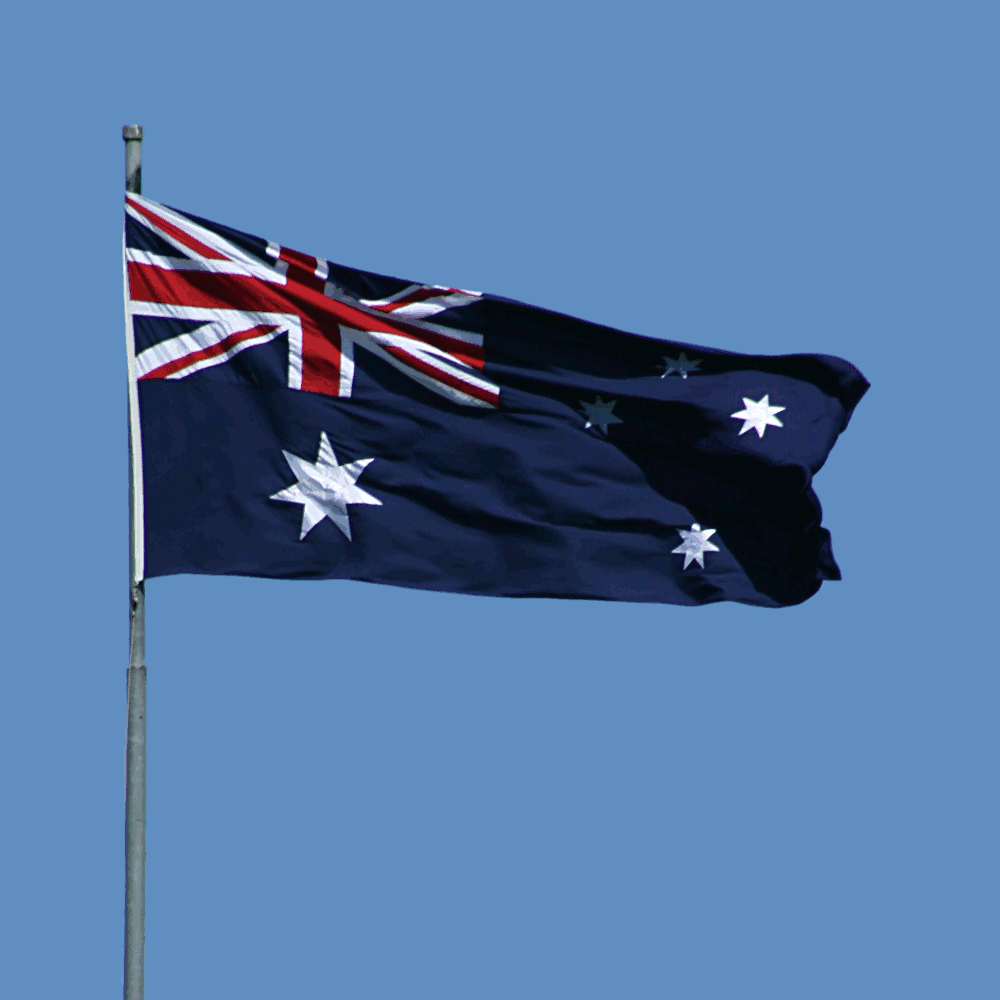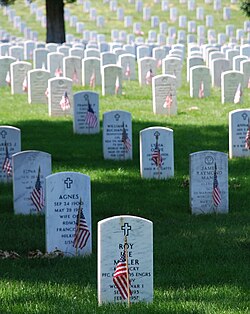
Sunday, November 29, 2009
Crappy Gift

The folks at Miller Park Zoo in downstate Bloomington are making and selling Christmas ornaments out of droppings from reindeer. No joke.
Here's how they are made. First, the deer poop of course, and then their dung is dried - then clear-coated and either painted or rolled in glitter. The end result is called Magical Reindeer Gem Ornaments. They're sold in the zoo's gift shop for $5, and each comes with a label of authenticity.
Saturday, November 28, 2009
Unique Christmas gift suggestions that you may seldom see under or on most Phoenix, AZ trees
![Grizzly Bear - Ready, Able [Official Music Video] Grizzly Bear - Ready, Able [Official Music Video]](http://i1.ytimg.com/vi/Puph1hejMQE/default.jpg) Grizzly Bear - Ready, Able. Click on image above.
Grizzly Bear - Ready, Able. Click on image above.
 $50.00 AUD Monster Children Mens Black Art T-Shirt. Large print on front. White print on Black Tshirt. Monster Children red flag on sleeve.
$50.00 AUD Monster Children Mens Black Art T-Shirt. Large print on front. White print on Black Tshirt. Monster Children red flag on sleeve.
 Sydney, Australia artist Will French whose installation is currently in Monster Children Gallery performs 'Franc-o-phile / Velo-Style. Click on image above.
Sydney, Australia artist Will French whose installation is currently in Monster Children Gallery performs 'Franc-o-phile / Velo-Style. Click on image above.
 Kurt's Guitar, 2007
The Art Dump (Collaborative Work by Andy Jenkins, Andy Mueller and Tony Larson) Artwork. From show 'Taking Turns' 2007. Digital print on paper + Frame.
Size: 560 x 780mm. Price: $700
For more details or questions email: shop@monsterchildren.com
Kurt's Guitar, 2007
The Art Dump (Collaborative Work by Andy Jenkins, Andy Mueller and Tony Larson) Artwork. From show 'Taking Turns' 2007. Digital print on paper + Frame.
Size: 560 x 780mm. Price: $700
For more details or questions email: shop@monsterchildren.com
 Monster Children Gallery
20 Burton St, Darlinghurst, NSW, AU
Monster Children Gallery
20 Burton St, Darlinghurst, NSW, AU


 http://www.frankie.com.au/
http://www.frankie.com.au/
 http://www.tintoyarcade.com/products/Boy-on-Bike-with-Dog-Aaron-and-Puppy.html#
http://www.tintoyarcade.com/products/Boy-on-Bike-with-Dog-Aaron-and-Puppy.html#
 http://www.tintoyarcade.com/products/RayGun-Christmas-Ornament-Blue-Red.html#
http://www.tintoyarcade.com/products/RayGun-Christmas-Ornament-Blue-Red.html#

"POOR MANS" PATIO* - Super comfortable MILK CRATE CHAIRS - $45.00 USD. http://tinyurl.com/y9txttr
*At $45 this is actually a very expensive item which you can easily reproduce yourself without cost. Steal a few crates from behind your local grocery store and top them with cheap foam that you take from behind Walmart. With your handy pocket box-cutter simply custom-cut the foam to the size of your bottom. Be careful cutting the outline.Friday, November 27, 2009
Sports in the news.

New Zealand's champion rabbit thrower is a 19-year-old female German tourist.
Lisa Lutz could not believe her luck when she out-threw a Waitomo local by the name of "Butch" at the world rabbit throwing championship in Waitomo yesterday.
Waitomo New Zealand - world famous for its Glowworm Caves.
More than 70 people took part in the event, according to organiser Barry Woods, who said it was great to see people of all ages rolling up their sleeves and taking part.
Competitors selected a dead rabbit from a pile and threw it into a trailer attached to a motorbike which, Mr Woods said, was exactly how it's done on the farm.
"Why shouldn't kids be able to see how it's done, handle a dead animal and learn about pests which destroy the environment?" he said.
Miss Lutz won a trip for two on the Waitomo Riverjet and a $100 meal voucher for her throwing ability.
 Bottle of Tui Beer from New Zealand, preferred favorite of New Zealand champion rabbit tossers. Our motto: "After tossing a few dead rabbits, it is time to toss down a Tui or two".
Bottle of Tui Beer from New Zealand, preferred favorite of New Zealand champion rabbit tossers. Our motto: "After tossing a few dead rabbits, it is time to toss down a Tui or two".
Thursday, November 26, 2009
... and then there is Sir Rolf
 Like being force-fed Vegemite, some insular yanks are gonna die here swallowing something (GASP) different...
This is Janet Leigh, an American, about to die an agonizing death in the abnormal film Psycho...
Like being force-fed Vegemite, some insular yanks are gonna die here swallowing something (GASP) different...
This is Janet Leigh, an American, about to die an agonizing death in the abnormal film Psycho...
 Rolf Harris, CBE, AM (born 30 March 1930), is an Australian musician, singer, composer, painter, and television host and personality.
Official website
This is Sir Rolf, an Australian and a Knight, just like one of King Arthur's Knights of the Round Table, rightly appointed thus by HRH Elizabeth....
Rolf Harris, CBE, AM (born 30 March 1930), is an Australian musician, singer, composer, painter, and television host and personality.
Official website
This is Sir Rolf, an Australian and a Knight, just like one of King Arthur's Knights of the Round Table, rightly appointed thus by HRH Elizabeth....
 In Australia and in the U.K. Sir Rolf is, in deed, a very big deal.
In Australia and in the U.K. Sir Rolf is, in deed, a very big deal.
 Click on the images below to see some of his world-famous routines
Click on the images below to see some of his world-famous routines
 Here's Rolf Harris singing one of his most famous songs Jake the Peg on The Rolf Harris Show. This was screened on BBC1 on Saturday 22nd March 1969.
Here's Rolf Harris singing one of his most famous songs Jake the Peg on The Rolf Harris Show. This was screened on BBC1 on Saturday 22nd March 1969.
 Rolf Harris in Concert at the Royal Albert Hall, London, UK Performs Tie Me Kangaroo Down, Sport (accompanying himself on the wobble board) Added to
Quicklis
Rolf Harris in Concert at the Royal Albert Hall, London, UK Performs Tie Me Kangaroo Down, Sport (accompanying himself on the wobble board) Added to
Quicklis
 Grand Opening of Royal Albert Hall by Queen Victoria on 29 March 1871
Grand Opening of Royal Albert Hall by Queen Victoria on 29 March 1871
 Exterior of the Royal Albert Hall.
Exterior of the Royal Albert Hall.
 Rolf Harris and his Sun Arise is a well loved song. In the slide show there are images of the sun rising ... Rolf ... a few Australian animals and of course, some of Rolf's fantastic paintings.
Rolf Harris and his Sun Arise is a well loved song. In the slide show there are images of the sun rising ... Rolf ... a few Australian animals and of course, some of Rolf's fantastic paintings.
 Once a jolly swagman camped by a billabong
Under the shade of a Coolibah tree...
Once a jolly swagman camped by a billabong
Under the shade of a Coolibah tree...
 Added to
QuicklisBeatles and Rolf Harris singing Tie me Kangaroo Down with quite a few mistakes, which make this recording so appealing.
Added to
QuicklisBeatles and Rolf Harris singing Tie me Kangaroo Down with quite a few mistakes, which make this recording so appealing.
 Rolf Harris, A Pub With No Beer. The original is by Slim Dusty, a country and outback singer, who died at the age of 76 in September 2003. He is and was, one of
Australias most popular singers.
Rolf Harris, A Pub With No Beer. The original is by Slim Dusty, a country and outback singer, who died at the age of 76 in September 2003. He is and was, one of
Australias most popular singers.
 Rolf Harris singing Laughing Policeman
Added to
Quicklis
Rolf Harris singing Laughing Policeman
Added to
Quicklis
 Added to
QuicklisRolf Harris and The Hippopotamus Song
Added to
QuicklisRolf Harris and The Hippopotamus Song
 Caractacus">
Caractacus">
The Court Of King Caractacus. Rolf & Basil Brush performing Rolf's classic live at the Albert Hall, London.
 Original Rolf Harris signed illustration
Original Rolf Harris signed illustration

Rolf on Art (Hardcover) by Rolf Harris (Author)
| 2 Reviews
|
| RRP: | £14.99 |
| Price: | £9.73 & this item Delivered FREE in the UK with Super Saver Delivery. See details and conditions |
| You Save: | £5.26 (35%) |
Wednesday, November 25, 2009
weasel bureaucrats in Washington DC and in Washington State
 Mustela nivalis - being given a bad name by bureaucrats...
Mustela nivalis - being given a bad name by bureaucrats...
 Federal, State, and Local Bureaucracies
Federal, State, and Local Bureaucracies
Former drug informant sees hope for legal status fade
Hope is fading that an illegal immigrant from El Salvador, who spent more than a dozen years as a confidential informant for local law enforcement, might gain legal status in the U.S. Unable to find work in this economy, Ernesto Gamboa says he may decide early next year to give up and return to his home country.
Seattle Times staff reporter
Related
For Ernesto Gamboa, the Salvadoran who spent 13 years as a confidential informant for local law enforcement, the prospects of gaining legal status in the U.S. have grown increasingly dim.
The U.S. Attorney's Office, one of the last vestiges of hope for the 41-year-old, told him in a letter last week that it lacked the resources and manpower to sponsor him for a visa.
And unable to find work in this economy, Gamboa, who entered the U.S. in 1992 and overstayed a visitor's visa, says he may decide early next year to give up and return home.
Under the supervision of the U.S. Immigration and Customs Enforcement (ICE), Gamboa began working as an informant with local law-enforcement agencies in the mid-1990s.
His work on major national and international drug investigations helped to win more than 90 federal convictions and led to seizure of money, weapons, vehicles and drugs, including more than 282 pounds of cocaine.
He parted ways with ICE near the end of a major drug investigation in May, when he said he was threatened with deportation after telling an agent he was broke and wanted to take a regular paying job on top of his informant work.
ICE soon arrested and detained Gamboa and moved ahead with plans to deport him. But under mounting pressure from other agencies, it released him after six weeks.
Now, Gamboa's status is not unlike that of millions of illegal immigrants nationwide — unable to find legitimate work or to travel — and with no obviously viable way to make it right. "I'm out and everybody's turned their backs," he said.
"It's really frustrating that after all these years they close the door and say, 'Forget about him.' "
Visa difficulties
Gamboa had won the support of retired law-enforcement officials who'd worked with him over the years as well as that of U.S. Sen. Maria Cantwell, D-Wash., who said the government owes him legal status, given his years of service to this country.
Cantwell wrote the Washington State Patrol, which had handled Gamboa as an informant, and the U.S. Attorney's Office, which prosecuted some of the cases on which he worked, asking them to sponsor him for the so-called S visa, a hard-to-get status reserved for immigrants who cooperate with law enforcement.
Over the months, there's been a lot of finger-pointing among the agencies that worked with Gamboa as to which should help him obtain legal status. The State Patrol said it couldn't support the request — being a state agency rather than a federal agency — and later notified Gamboa by mail that it was terminating his status as a confidential informant. Under federal law, any law-enforcement agency can initiate the "S" visa process.
And last week, the U.S. Attorney's Office offered a more detailed explanation of its earlier refusal to sponsor Gamboa, saying its "core mission is to prosecute violations of federal criminal laws" and it lacks the personnel and resources for the kind of monitoring that would be required.
Jorge Barón, executive director of the Northwest Immigrant Rights Project, who represented Gamboa after he was detained, said Gamboa would not require the kind of monitoring to which the U.S. Attorney is referring because his cooperation with law-enforcement was in the past, and is not ongoing.
Still, Barón is not giving up, he said, and is having "some conversations that still may bear fruit."
Out of options
Gamboa said ICE has never paid him, as promised, for the work he did on a major drug investigation the agency wrapped up in July that led to 31 arrests and the seizure of weapons, vehicles and more than 19 pounds of methamphetamine.
"I worked 13 months without pay," Gamboa said.
But unable to find work, he said he may have little choice but to return to El Salvador. "I guess that's what they (ICE) wanted all along," he said. "They figured if I can't work, can't make money, that I'll just leave."
 Click on the image for a political message
Click on the image for a political message
 jpg">
jpg">
Tuesday, November 24, 2009
Lest We Forget - Guarding the Tomb of the Unknown Soldier, Arlington National Cemetery
From Wikipedia with thanks to S. M. for the heads-up.
 3d US Infantry Regiment (The Old Guard)
The regiment is the oldest active unit of infantry in the army, having been first organized as the First American Regiment in 1784.
3d US Infantry Regiment (The Old Guard)
The regiment is the oldest active unit of infantry in the army, having been first organized as the First American Regiment in 1784.
It is considered one of the highest honors to serve as a ceremonial guard at the Tomb of the Unknowns. Less than 20% of all volunteers are accepted for training and of those only a fraction pass training to become full-fledged Tomb Guards. The sentinels do not wear rank insignia on their uniforms so that they do not outrank the Unknowns, whatever their rank may have been. Soldiers serving in other roles, like Relief Commander and Assistant Relief Commander, do wear insignia of their rank when changing the guard only. They have a separate uniform worn when they actually guard the Unknowns or are "Posted".
There is a meticulous ritual the guard follows when watching over the graves:- The soldier walks 21 steps across the Tomb. This alludes to the 21-gun salute, which is the highest honor given to any military or foreign dignitary in America. His weapon is always on the shoulder opposite the Tomb (i.e., on the side of the gallery watching the ritual).
- On the 21st step, the soldier turns and faces the Tomb for 21 seconds.
- The soldier then turns to face the other way across the Tomb and changes his weapon to the outside shoulder.
- After 21 seconds, the first step is repeated.
This is repeated until the soldier is relieved of duty at the Changing of the Guard.
The mat is usually replaced twice per year: before Memorial Day and before Veterans Day. This is required due to the wear on the rubber mat by the special shoes worn by Tomb Guards. The guards have metal plates built into the soles and inner parts of their shoes to allow for a more rugged sole and to give the signature click of the heel during maneuvers. The guards are issued sunglasses, which are formed to their faces, due to the bright reflection from the marble surrounding the Tomb and the Memorial Amphitheater.
On the ground not covered by the mat, a wear pattern in the tile can be seen that corresponds to the precise steps taken during the changing of the guard. On the mat itself, footprints worn in by hours and hours of standing guard are also visible.
During the day in summer months, from April 1 to September 30, the guard is changed every half hour. During the winter months, from October 1 to March 31, the guard is changed every hour. After the cemetery closes to the public (7pm to 8am April through September, and 5pm to 8am October through March), the guard is changed every two hours until the cemetery reopens.
The guard change is very symbolic, but also conducted in accordance with Army regulations. The relief commander or assistant relief commander, along with the oncoming guard, are both required for a guard change to take place. The guard being relieved will say to the oncoming guard, "Post and orders remain as directed." The oncoming guard's response is always, "Orders Acknowledged." A guard change takes approximately 10 minutes. The ceremony can be witnessed by the public whenever Arlington National Cemetery is open.
The Tomb Guards, a special platoon within the 3rd U.S. Infantry Regiment (The Old Guard) work on a team rotation of 24 hours on, 24 hours off, for five days, taking the following four days off. A guard takes an average of 6 hours to prepare his uniform (which is solid wool regardless of the time of year) for the next day's work. In addition to preparing the uniform, guards also complete physical training, Tomb Guard training, cut their hair before the next work day, and shave twice per day. Tomb Guards are required to memorize 16 pages of information about Arlington National Cemetery and the Tomb of the Unknown Soldier, including the locations of nearly 300 graves and who is buried in each one.
Tomb of the Unknown Soldier Guard Identification Badge in heavy sterling silver (2 inches in diameter).
A special Army decoration, the Tomb of the Unknown Soldier Identification Badge is authorized for wear after passing a detailed test of 100 questions (from a pool of more than 300), a uniform test with two gigs (errors) or fewer (measured to the 1/64"), and a test on the guard changing sequence. After serving honorably for a period of nine months, and having passed the sequence of tests, a Tomb Guard is permanently awarded the Badge. Since 1959, many men have completed training and been awarded this Badge, as well as three women. A small number of Tomb Guard Identification Badges have also been retroactively awarded to soldiers who served as Guards before 1959. Those numbers make the Badge the second rarest award currently issued in the United States Army; only the Army Astronaut Badge is more rare.
The Tomb Guard Identification Badge is the only badge awarded by the United States Army that can be revoked after a soldier has left the military. The Regimental Commander of the 3rd U.S. Infantry Regiment has the authority to revoke a Badge from any Guard (past or present) for any act that would bring discredit upon the Tomb of the Unknowns.
The badge was designed in 1956 and first issued to members of the Honor Guard at the Tomb of the Unknowns on February 7, 1958. The badge was first issued only as a temporary wear item, meaning the soldiers could only wear the badge during their tenure as members of the Honor Guard. Upon leaving the duty, the badge was returned and reissued to incoming soldiers. In 1963, a regulation was enacted which allowed the badge to be worn as a permanent part of the military uniform, even after the soldier's completion of duty at the Tomb of the Unknowns.
 Hundreds of volunteers gathered at Arlington to place more than five thousand donated Christmas wreaths on head stones in the cemetery. The 14th annual wreath laying event is a result of Worcester Wreath Company owner Morrill Worcester's boyhood dream of doing something to honor those laid to rest in the National Cemetery.
Hundreds of volunteers gathered at Arlington to place more than five thousand donated Christmas wreaths on head stones in the cemetery. The 14th annual wreath laying event is a result of Worcester Wreath Company owner Morrill Worcester's boyhood dream of doing something to honor those laid to rest in the National Cemetery.
 A member of Caisson Platoon escorts 'Sergeant York', the riderless horse used during the funeral procession for the 40th President of the United States, Ronald Reagan.
A member of Caisson Platoon escorts 'Sergeant York', the riderless horse used during the funeral procession for the 40th President of the United States, Ronald Reagan.
 The Old Guard Caisson Platoon transporting a casket in Arlington National Cemetary
The Old Guard Caisson Platoon transporting a casket in Arlington National Cemetary













